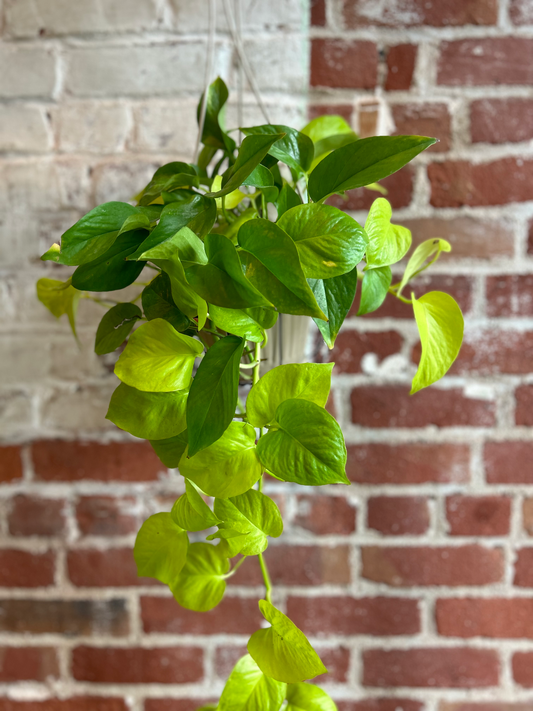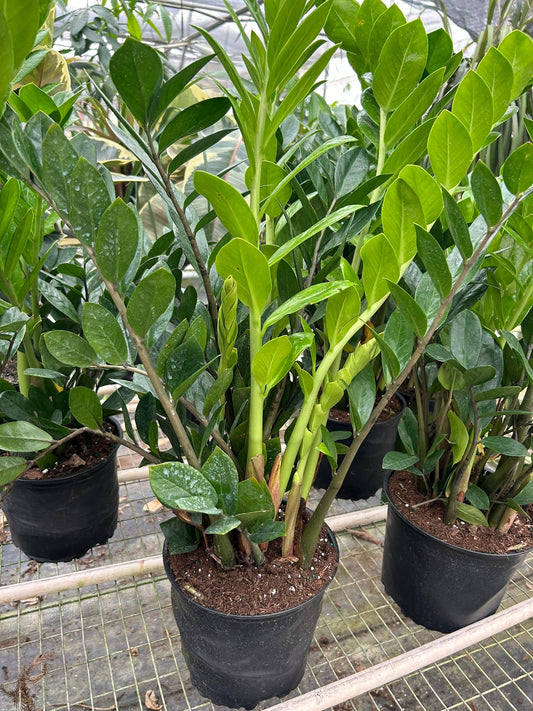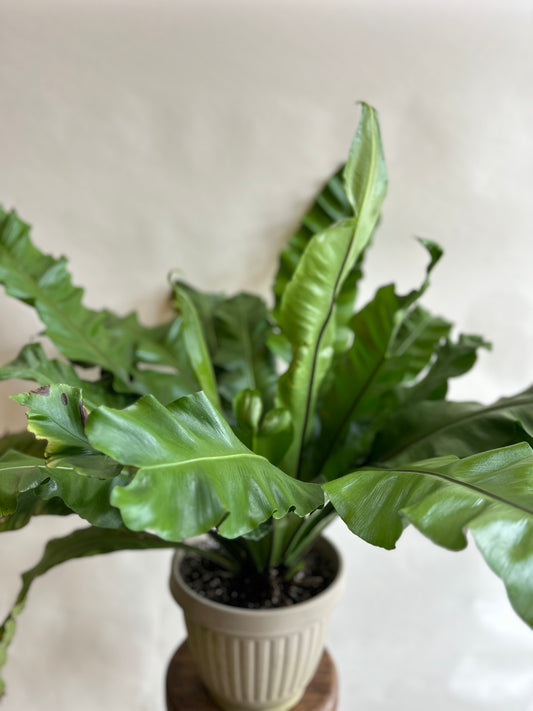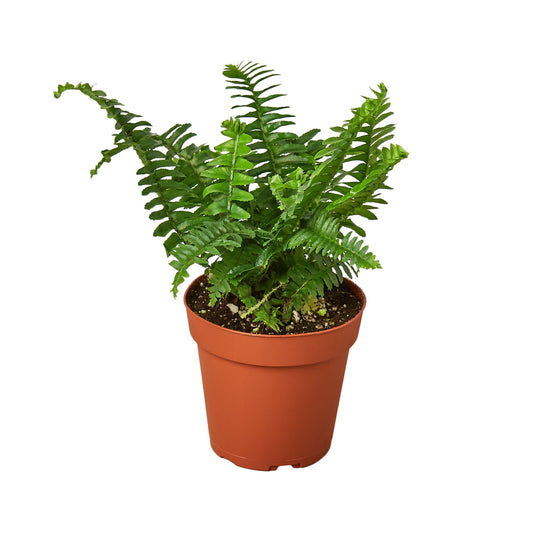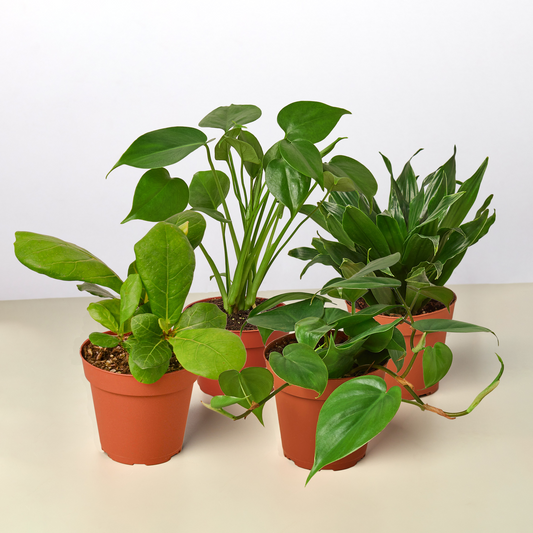How to Grow and Care for Peacock Plants
Cafe Planta Team
The Peacock Plant, with its vibrant and eye-catching foliage, is a true showstopper for any indoor garden. Its leaves, adorned with intricate patterns reminiscent of a peacock's feathers, make it a favorite among plant lovers. But let's be honest, keeping this beauty thriving requires a bit of TLC. If you're ready to take on the challenge, you're in for a rewarding journey with this stunning plant.
This article will walk you through everything you need to know about growing and caring for Peacock Plants. We'll cover their light and water needs, the best soil and potting practices, how to tackle common pests, and even some tips on incorporating these beauties into your home décor. By the end of this guide, you'll be well-equipped to keep your Peacock Plant looking its best.
Understanding Peacock Plants
Before we dive into care specifics, let's take a moment to appreciate what makes Peacock Plants so unique. Officially known as Calathea makoyana, these plants hail from the tropical rainforests of Brazil. Their striking leaves feature a combination of deep green and light green markings, with a lovely purple underside that adds a pop of color when the leaves fold up at night.
Peacock Plants are part of the Marantaceae family, commonly known as the Prayer Plant family. This name comes from their habit of folding their leaves upwards, as if in prayer, during the night. This movement is not just fascinating to observe but also a sign that your plant is healthy and happy. So, what does it take to keep those leaves moving and the colors vibrant? Let's find out.
Light Requirements
One of the first things to consider when bringing a Peacock Plant into your home is its light needs. These plants thrive in bright, indirect light. Think of the dappled sunlight that filters through the canopy of a rainforest—this is the kind of lighting they love. Direct sunlight, on the other hand, can be too harsh and may cause their beautiful leaves to fade or even scorch.
If you don't have a spot with the perfect light, don't worry. Peacock Plants are quite adaptable and can tolerate low light conditions. However, they'll grow a bit more slowly and the colors might not be as vibrant. A north or east-facing window is often ideal, but if that's not an option, you might consider using sheer curtains to diffuse the light from a sunnier window.
Another great tip is to rotate your plant every few weeks. This ensures that all sides receive equal light, promoting balanced growth and preventing the plant from leaning toward the light source. If you notice your Peacock Plant's leaves looking a bit droopy or lackluster, it might be time to reassess its lighting situation.
Watering Your Peacock Plant
When it comes to watering, Peacock Plants can be a bit finicky, but once you understand what they need, it's smooth sailing. These plants prefer to have consistently moist soil, but they don't like sitting in water. Think of them as the Goldilocks of the plant world—not too wet, not too dry, just right!
During the growing season, which typically runs from spring through summer, you should aim to water your Peacock Plant once a week. Always check the top inch of soil first; if it's dry, it's time to water. When watering, be sure to use room temperature water, as cold water can shock their roots.
In the cooler months, you can reduce the watering frequency, allowing the top layer of soil to dry out a bit more between waterings. It's important to adjust your watering routine based on your home's humidity and temperature. A helpful trick is to use a moisture meter, which can take the guesswork out of watering. Remember, overwatering is a common mistake and can lead to root rot, so when in doubt, err on the side of caution.
Soil and Potting Tips
Choosing the right soil and pot is crucial for the health of your Peacock Plant. These plants prefer a well-draining potting mix that retains some moisture but allows excess to escape. A mix designed for African violets, with added perlite or orchid bark, usually does the trick. This combination helps keep the soil light and airy, preventing water from pooling around the roots.
When it comes to pots, drainage is key. Always opt for a pot with drainage holes to prevent water from sitting at the bottom. A decorative outer pot without holes can work, but make sure to remove the inner pot when watering and let it drain fully before placing it back.
Repotting your Peacock Plant every two years keeps it healthy and gives you a chance to refresh the soil. Spring is the best time to repot since the plant is entering its growing season. When repotting, choose a pot that's only slightly larger than the current one to prevent the soil from retaining too much moisture.
Humidity and Temperature
Peacock Plants thrive in environments that mimic their native tropical habitats, which means they love high humidity and warmth. If you live in a dry area, or during the winter months when indoor air can be quite dry, you might need to give your plant a little extra help.
Here are a few ways to boost humidity:
- Humidifier: This is the most effective way to maintain consistent humidity levels around your plant.
- Pebble Tray: Place a tray filled with water and pebbles beneath your plant's pot. As the water evaporates, it increases the humidity around the plant.
- Grouping Plants: Placing your Peacock Plant near other humidity-loving plants can create a microclimate with higher humidity.
As for temperature, keep your Peacock Plant in a spot where temperatures range from 65°F to 75°F. Avoid cold drafts, sudden temperature changes, and vents that blow hot or cold air directly on the plant. These conditions can stress your plant and lead to leaf damage.
Fertilizing Your Peacock Plant
Fertilizing your Peacock Plant can boost its growth and keep its foliage vibrant. During the growing season, which is spring through summer, feed your plant once a month with a balanced, water-soluble fertilizer diluted to half strength. This provides the nutrients it needs to thrive without overwhelming it.
In the fall and winter, when growth slows down, you can stop fertilizing. Over-fertilizing in the dormant period can lead to salt buildup in the soil, which can harm the plant's roots. If you're ever unsure about when to fertilize, err on the side of less rather than more. Peacock Plants are not heavy feeders, and it's better to under-fertilize than overdo it.
Another tip is to occasionally flush the soil with water to clear out any fertilizer salts that may accumulate. Simply water the plant thoroughly and let it drain completely, ensuring the pot has good drainage to avoid waterlogging.
Dealing with Pests
No plant is entirely immune to pests, and Peacock Plants are no exception. The most common pests that might make themselves at home on your plant include spider mites, aphids, and mealybugs. The good news is that with a bit of vigilance and prompt action, you can keep these pesky invaders at bay.
Here's a simple pest-management routine:
- Regular Inspection: Check the undersides of leaves and stems for any signs of pests or damage. Catching them early makes treatment easier and more effective.
- Shower Method: If you spot pests, give your plant a gentle shower with lukewarm water. This can help wash away many of the insects.
- Insecticidal Soap: For stubborn infestations, use an insecticidal soap or neem oil. Always follow the instructions on the product label and test on a small leaf area first to ensure no adverse reaction.
Healthy plants are less prone to pest problems, so maintaining good care practices is your best defense. Regularly wiping the leaves with a damp cloth can also help prevent dust buildup and keep pests at bay.
Incorporating Peacock Plants into Your Home Decor
Now that you're well-versed in the care of Peacock Plants, it's time to think about how to integrate them into your living space. Their striking foliage makes them perfect for adding a touch of nature and elegance to any room.
Here are some ideas:
- Statement Piece: Place your Peacock Plant in a decorative pot on a plant stand to create an eye-catching focal point in your living room or hallway.
- Table Centerpiece: Use a smaller Peacock Plant as a centerpiece on your dining or coffee table. Pair it with candles or other small plants for a cohesive look.
- Layered Greenery: Group your Peacock Plant with other tropical plants of varying heights to create a lush, layered effect. This works well in corners or near large windows.
Wherever you choose to display your Peacock Plant, make sure it's in a spot that meets its light and humidity needs. This not only ensures the plant thrives but also keeps your decor looking fresh and vibrant.
Common Problems and Solutions
Even with the best care, you might encounter a few hiccups with your Peacock Plant. Here are some common issues and how to address them:
- Leaf Curling: This often indicates low humidity or underwatering. Increase humidity around the plant and ensure it's watered adequately.
- Browning Edges: Brown leaf edges can result from dry air, over-fertilizing, or inconsistent watering. Check your care routine and adjust as needed.
- Yellowing Leaves: Yellow leaves can be a sign of overwatering. Allow the soil to dry out a bit more between waterings and check that the pot has good drainage.
Don't be discouraged if your plant shows signs of stress. Plants are resilient, and with some adjustments, your Peacock Plant can bounce back and continue to thrive.
Propagation Tips
If you're looking to expand your Peacock Plant family, propagation is a rewarding way to do it. These plants are best propagated through division, which involves separating the plant into smaller sections and replanting them.
Here's a simple step-by-step guide:
- Timing: The best time to divide and propagate your Peacock Plant is during its growing season, typically in spring or early summer.
- Preparation: Gently remove the plant from its pot and shake off excess soil to expose the roots.
- Division: Using a clean, sharp knife, carefully divide the root ball into smaller sections, ensuring each section has a few healthy leaves and roots.
- Replanting: Plant each division in a pot with fresh, well-draining soil. Water them thoroughly and place them in a spot with bright, indirect light.
After repotting, keep the divisions in a warm, humid environment to help them establish roots. With a bit of patience, you'll soon have new Peacock Plants to enjoy or share with friends.
Final Thoughts
Peacock Plants are a stunning addition to any home, bringing a touch of the exotic with their vibrant and intricate leaves. By understanding their specific needs, from light and water to soil and humidity, you can keep your plant thriving and beautiful.
At Cafe Planta, we're passionate about helping you succeed in your plant care journey. Whether you're looking for more plants, care accessories, or plant-themed apparel, we're here for you. If you have any questions or just want to chat about plants, feel free to email us or reach out on Instagram. Let's connect and grow together!


